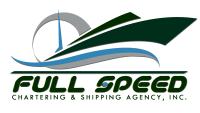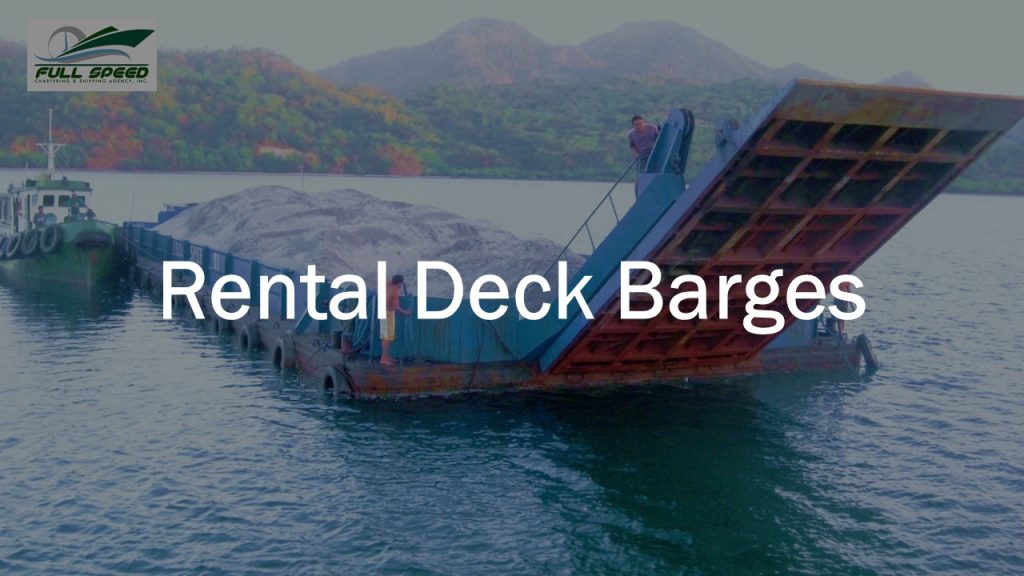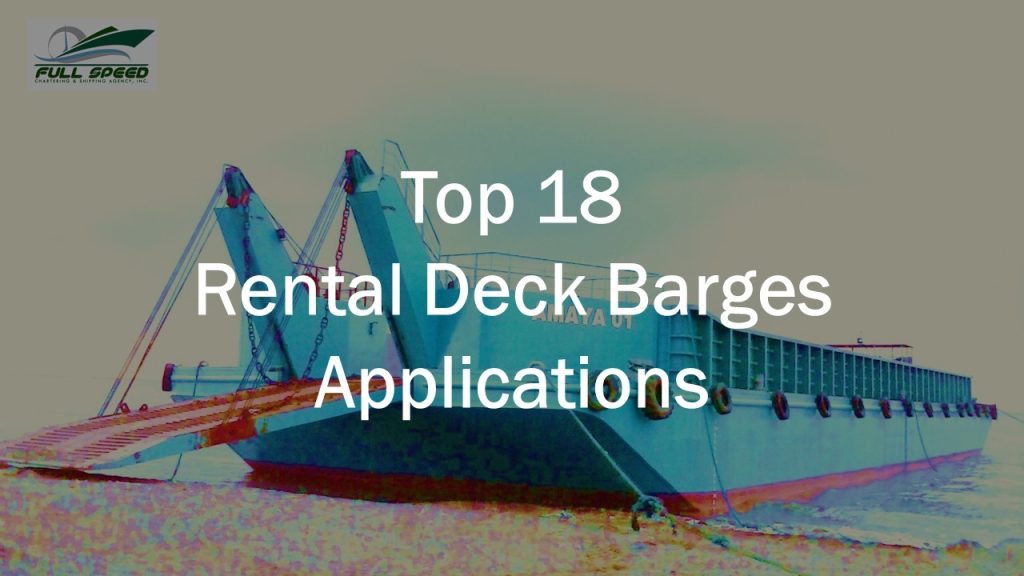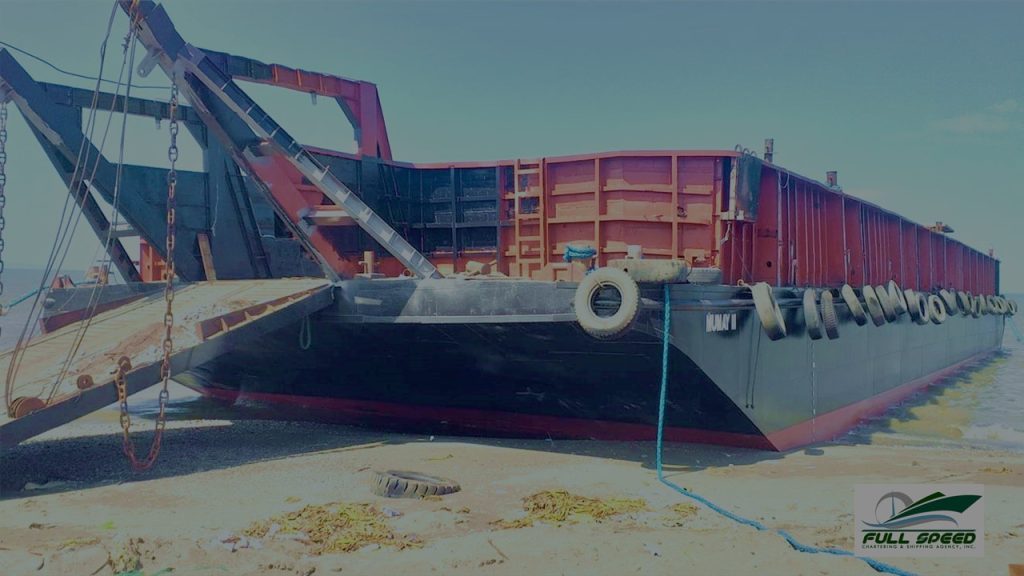Dredging barges, the unsung heroes of coastal development in the Philippines, have become an integral part of maintaining and improving waterways across the archipelago. With its labyrinthine network of rivers, estuaries, and bays, this Southeast Asian nation relies heavily on these floating giants to combat erosion, facilitate navigation, and support environmental conservation efforts. A fascinating blend of engineering marvels and sustainable practices, dredging barges play a vital role in shaping the country’s landscape while preserving its precious marine ecosystems. In this article, we will delve into the inner workings of these colossal vessels that silently contribute to the growth and protection of one of Asia’s most stunning natural wonders.
Click here to view our fleet of dredging barges in the Philippines.
What are Dredging Barges? How Does It Work?
Dredging barges are robust vessels specifically designed for the purpose of removing sediment, debris, and other unwanted materials from bodies of water. These floating workhorses play a crucial role in maintaining waterways, preventing flooding, and facilitating maritime activities. Equipped with powerful hydraulic systems and heavy-duty pumps, dredging barges are able to extract large volumes of material from the seabed or river bottoms.
The process involves deploying a series of specialized equipment, such as cutter heads or suction heads, at the front of the barge. These tools either cut through compacted sediments or create suction to remove loose materials efficiently. As the dredge head excavates the bottom surface, a mixture of water and sediment known as slurry is formed. This slurry is then pumped into onboard storage compartments called hoppers for temporary containment.
One interesting aspect worth noting about dredging barges is their adaptability to various types of environments and conditions. They can operate in shallow waters where traditional excavation methods would be impossible, making them ideal for coastal areas and inland water systems like rivers or lakes. Moreover, they can also be fitted with different attachments depending on specific requirements – from digging trenches for pipelines to deepening channels for larger vessel access. Dredging barges truly exemplify innovation meeting necessity in our quest to harness natural resources while preserving aquatic ecosystems intact.
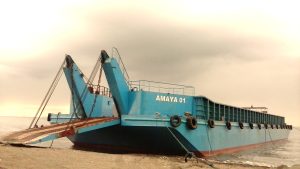
The Importance of Dredging in the Philippines
Dredging plays a crucial role in the development and maintenance of infrastructure in the Philippines. With its archipelagic nature, the country heavily relies on maritime transportation for economic growth and cultural exchange. However, shallow waters, silt accumulation, and changing riverbeds pose significant challenges to maintaining efficient waterways.
By utilizing dredging barges equipped with cutting-edge technology, these obstacles can be overcome effectively. Dredging helps deepen channels and rivers, allowing larger vessels to navigate safely and efficiently. This promotes trade by facilitating the transportation of goods both domestically and internationally. Moreover, it enables tourism activities such as island hopping and marine exploration that contribute to local economies.
Beyond enhancing navigation routes and supporting economic activities, dredging also plays a critical role in protecting coastal areas from erosion caused by storms or sea level rise. By removing sediments from harbors and nearshore areas, dredging prevents excessive sedimentation that can damage coral reefs and delicate marine ecosystems.
Furthermore, excluding sediment build-up reduces flood risks during heavy rainfalls by improving water flow through rivers and drainage systems. This is essential in a country prone to tropical storms that often lead to devastating floods.
The importance of dredging cannot be overstated when considering the development of maritime infrastructure in the Philippines. It not only ensures safe navigation for trade but also supports sustainable tourism activities while safeguarding coastal areas from erosion. Additionally, reducing sedimentation levels along waterways it helps mitigate flood risks during extreme weather events like typhoons.
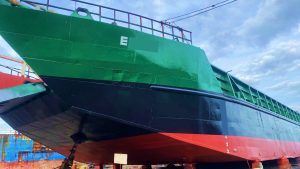
Types of Dredging Barges Available in the Philippines
When it comes to dredging, having the right equipment is crucial for achieving optimal results. One of the most important pieces of equipment in the dredging process is the dredging barge. Dredging barges in the Philippines come in various types, each designed for specific tasks and conditions.
One common type of dredging barge is a traditional flat-bottom barge. This type of barge is ideal for shallow water operations and can be used for various purposes, such as removing sediment, deepening channels, or creating landfills. Its flat bottom allows for stability during operations, while its wide deck provides ample space for equipment and materials.
Another popular type of dredging barge is the split hopper barge. This innovative design features two separate hulls that can be opened to release the collected sediments at designated disposal sites. Split hopper barges are particularly efficient when working in confined areas or when navigating through narrow channels. They are often used in projects that require both excavation and transport capabilities.
For large-scale dredging projects, trailing suction hopper barges are frequently employed. These sturdy barges feature a large suction mouth that collects sediments from the seabed, which are then stored in onboard hoppers until they reach an appropriate discharge area. Trailing suction hopper barges have immense capacity and can handle complex terrains with ease.
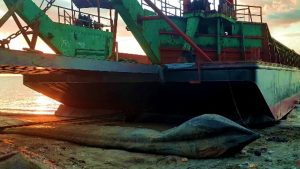
Factors to Consider When Choosing Dredging Barges in the Philippines
When it comes to choosing dredging barges in the Philippines, there are several factors that should be taken into consideration. One of the most important factors is the size and capacity of the barge. The size of the barge will depend on the scale of the dredging project and the amount of sediment or material that needs to be removed. It is crucial to choose a barge that can handle the workload efficiently and effectively.
Another factor to consider is whether the barge is self-propelled or non-self-propelled. Self-propelled barges have their own engines, allowing them to move independently in waterways, while non-self-propelled barges require tugboats to move them from one location to another. The decision between these two options will depend on factors such as accessibility and maneuverability requirements.
Additionally, it is essential to consider any additional equipment or technology that may be required for specific dredging projects. For instance, some projects may require specialized attachments such as cutter heads or suction pipes for more effective removal of sediment or debris. It is crucial to ensure that these additional features are compatible with both the chosen barge model and available onboard infrastructure.
Overall, selecting a suitable dredging barge involves considering factors like size, propulsion system, and any necessary additional equipment based on each project’s requirements.
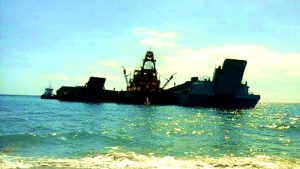
The Process of Dredging with Barges in the Philippines
Dredging with barges in the Philippines is a complex and intricate process that plays a crucial role in maintaining the country’s waterways and coastal areas. Barges, equipped with powerful dredging equipment, are deployed to remove sediment, silt, and debris from rivers, lakes, and harbors. This process not only ensures safer navigation for boats and ships but also helps combat flooding by increasing the capacity of water channels.
One interesting aspect of dredging with barges is the use of advanced technology to monitor the operation in real-time. Remote-controlled devices are often employed to measure depth levels accurately during the dredging process. These devices provide crucial data that enables operators to optimize efficiency and mitigate potential environmental impacts. By combining precise measurements with digital mapping technology, contractors can ensure that every inch of sediment is removed effectively while minimizing disruption to marine ecosystems.
The involvement of local communities is another integral part of dredging operations in the Philippines. To foster transparency and address concerns about environmental impact, public consultations are held prior to starting any large-scale dredging project. These consultations allow stakeholders such as fishermen or residents living near water bodies to voice their opinions and express any apprehensions about potential disruptions to their livelihoods or habitats.
The process of dredging with barges in the Philippines showcases a unique blend of cutting-edge technology, ecological considerations, and community engagement. It highlights how modern engineering practices can be harnessed sustainably for infrastructure development while preserving precious natural resources.
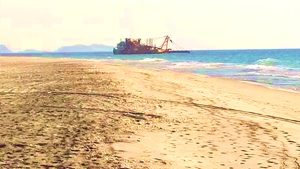
Benefits of Using Dredging Barges in the Philippines
Dredging barges have become an invaluable tool in the Philippines, offering numerous benefits for various industries and the environment. One significant advantage is their ability to effectively and efficiently remove large amounts of sediments from bodies of water. By removing excess sediment, dredging helps maintain navigation channels, ensuring safe and reliable ship passage. This is particularly vital in a country like the Philippines, where marine transportation plays a crucial role in economic growth.
Furthermore, using dredging barges also presents environmental benefits as they help restore ecosystems and protect coastal areas. The removal of sediments can improve water quality by reducing siltation and preventing the buildup of harmful pollutants. It also promotes healthier aquatic habitats for marine life to thrive. Dredging operations not only enhance biodiversity but also contribute to natural disaster resilience by mitigating flood risks through effective sediment management.
In addition to these advantages, employing dredging barges can provide economic benefits by creating job opportunities within local communities. Dredging projects require skilled workers in fields such as engineering, construction, and environmental monitoring. This leads to increased employment rates and potential economic growth for regions where these projects take place. Moreover, improved navigation channels resulting from dredging activities can attract more trade opportunities and boost tourism revenue in coastal areas.
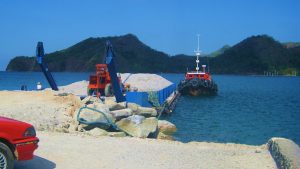
Regulations and Permits for Dredging Activities in the Philippines
Dredging activities, which involve the removal of sediment and debris from bodies of water to maintain or deepen navigation channels, play a crucial role in the Philippines. However, engaging in such activities requires careful adherence to numerous regulations and permits prescribed by the government. The Department of Environment and Natural Resources (DENR) is responsible for overseeing these regulations and issuing permits for dredging projects.
One key regulation that dredging operators must comply with is the Environmental Compliance Certificate (ECC), which ensures that projects are carried out without causing significant environmental impacts. Obtaining an ECC involves an extensive assessment process that includes an environmental impact statement, public consultations, and other necessary studies. This comprehensive approach ensures that dredging activities are conducted responsibly and sustainably.
In addition to the ECC, obtaining a permit from the Philippine Coast Guard is also necessary for any vessel engaged in dredging operations. These permits generally require compliance with safety standards and proper training for crew members involved in operating a dredge barge. By enforcing these regulations and permits, the government aims to minimize potential risks associated with improper handling of sediments or accidents during dredging operations.
These strict regulations and permits not only safeguard environmental integrity but also promote responsible practices within the industry. As technology advances and expectations around ecological preservation increase, it is imperative for operators to understand their obligations when engaging in dredging activities. Ultimately, by adhering to these rules, we can ensure sustainable development while protecting our valuable marine ecosystems.
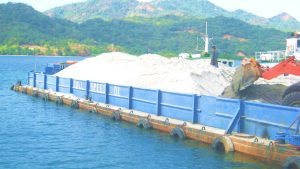
Environmental Considerations and Regulations for Dredging
One of the major concerns surrounding dredging operations is its potential impact on the environment. Dredging involves removing sediments, typically from rivers, lakes, or seabeds, which can disrupt marine ecosystems and result in habitat destruction. To address these concerns, numerous environmental considerations and regulations have been implemented to ensure that dredging activities are conducted responsibly.
Firstly, before any dredging operation takes place, an environmental impact assessment (EIA) is typically required. An EIA evaluates the potential environmental effects of a project and suggests measures to mitigate any negative impacts. This assessment includes factors such as water quality monitoring, sediment disposal planning, and analysis of potential harm to protected species or habitats.
Additionally, many countries have specific regulations regarding dredged material management. These regulations often require proper testing and classification of sediments before disposal or reuse. Sediments with high levels of contaminants must be treated accordingly to prevent pollution when disposed of back into the environment.
While necessary for various reasons, such as maintaining navigability or beach replenishment, dredging poses inherent risks to the environment if not regulated properly.
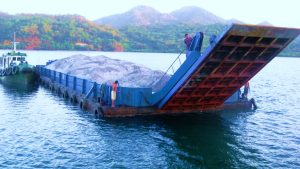
Future Outlook for Dredging Barges in the Philippines
The future outlook for dredging barges in the Philippines looks promising as the country continues to invest in infrastructure development and coastal protection. With its vast coastline and numerous rivers, the Philippines relies heavily on dredging to maintain navigable waterways, reclaim land, and prevent floods. This demand for dredging services is expected to increase in the coming years.
One key factor driving the future growth of dredging barges is the government’s commitment to coastal resiliency and climate change adaptation. As sea levels rise and storms become more intense, there is a growing need for effective coastal defense systems. Dredging plays a crucial role in building up protective barriers such as breakwaters and shoreline enhancements.
Moreover, with an expanding population that puts pressure on land resources, land reclamation projects are becoming essential for accommodating urban growth. Dredging barges have proven their efficiency in reclaiming land from bodies of water, creating new areas for commercial developments or housing solutions. This trend is likely to continue as cities expand further into coastal zones.
The future outlook for dredging barges in the Philippines looks promising due to increased investment in infrastructure development and coastal protection measures. The growing demand for dredging services driven by government initiatives aimed at climate change adaptation and land reclamation indicates a positive trajectory for this sector. As long as these factors remain important priorities for the country’s development agenda, we can expect continued growth opportunities for companies involved in dredging operations across the archipelago nation.
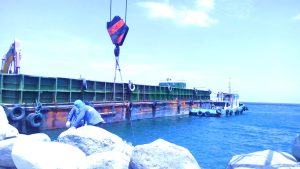
Who Can Hire Dredging Barges?
Dredging barges play a crucial role in various industries, and it is not just limited to government projects. Numerous entities can hire dredging barges depending on their needs. One of the main clients for this service is the construction industry. Construction companies often require extensive land excavation or waterway clearance when embarking on large infrastructure projects such as building bridges, ports, or harbors. Dredging barges provide an efficient solution for removing excess material and creating a clear path for construction activities.
Apart from the construction industry, mining companies also frequently employ dredging barges to extract valuable minerals and resources from bodies of water. By dredging sediment-rich areas, these companies can extract ores and aggregates more easily without causing significant environmental damage. Furthermore, port authorities often need to maintain navigable channels to accommodate larger vessels and prevent siltation in port areas. They rely on the services of dredging barge operators to ensure ships can safely enter and exit ports without any hindrance.
Who would have thought that an enormous floating machine could be so versatile? From construction sites to mining operations and even port maintenance, there seems to be no limit as to who can benefit from hiring a dredging barge. The demand for their services extends beyond government projects alone; private corporations often recognize the value they bring in optimizing operational efficiency while ensuring minimal negative impact on the environment.
Are You Looking for Dredging Barges in the Philippines?
Full Speed Chartering and Shipping Agency, Inc. (FSCSAI) is the name you need to remember if you are searching for top-notch dredging barges in the Philippines. With years of experience in providing reliable and efficient shipping services, FSCSAI offers a wide range of well-maintained barges that are perfect for any dredging project.
- Email us: info@fullspeedchartering.com
- Facebook Messenger: Click here
- Click here to inquire
What sets FSCSAI apart from other providers is its commitment to delivering cost-effective solutions without compromising on quality. Their fleet of dredging barges is carefully maintained to ensure optimal performance and efficiency. Whether you need a small barge for shallow water dredging or a larger vessel for more complex projects, FSCSAI has got you covered.
By choosing FSCSAI as your partner in dredging operations, you can rest assured that your project will be handled with utmost professionalism and expertise. Their skilled crew members are well-trained in operating the equipment and have vast experience in various types of dredging projects. With their knowledge and dedication, they will ensure that your project is completed successfully within the specified timeframe.
Don’t waste time searching for subpar options when it comes to acquiring dredging barges in the Philippines. Trust Full Speed Chartering and Shipping Agency, Inc. (FSCSAI) to provide you with high-quality equipment at competitive prices. Contact them today to discuss your requirements and take your dredging project to new heights of success!
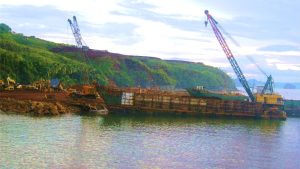
Summary: Maximizing Efficiency and Sustainability with Dredging Barges in the Philippines
In conclusion, the use of dredging barges in the Philippines has proven to be a valuable solution for maximizing efficiency and sustainability. These barges are specially designed to remove sediment and debris from waterways, ensuring smooth navigation and preventing flooding. By investing in this technology, the Philippines can address its ongoing challenges with silting, which often hampers maritime trade and increases the risk of natural disasters.
Furthermore, these dredging barges contribute to the country’s sustainable development goals by promoting environmental conservation. The removal of accumulated sediments not only improves water quality but also rejuvenates aquatic ecosystems. Additionally, by maintaining clear channels and harbors through regular dredging operations, ships can operate more efficiently with reduced fuel consumption and lower carbon emissions.
Overall, it is evident that incorporating dredging barges into the Philippines’ infrastructure strategy is a win-win situation. It boosts economic growth by supporting maritime trade while simultaneously protecting natural resources and reducing environmental impact. With proper planning and management, these barges have the potential to revolutionize waterway maintenance in the country and pave the way for a sustainable future.
